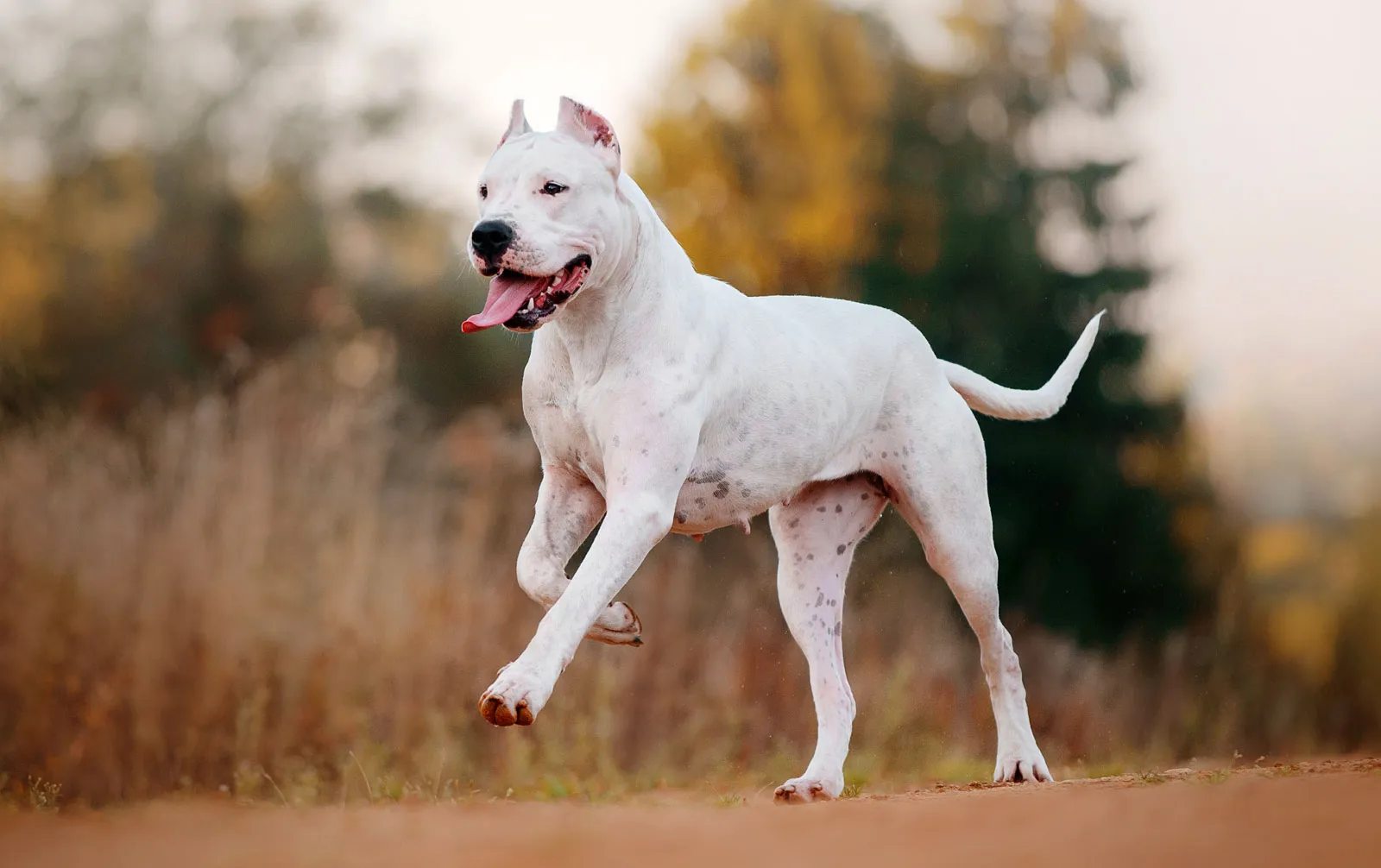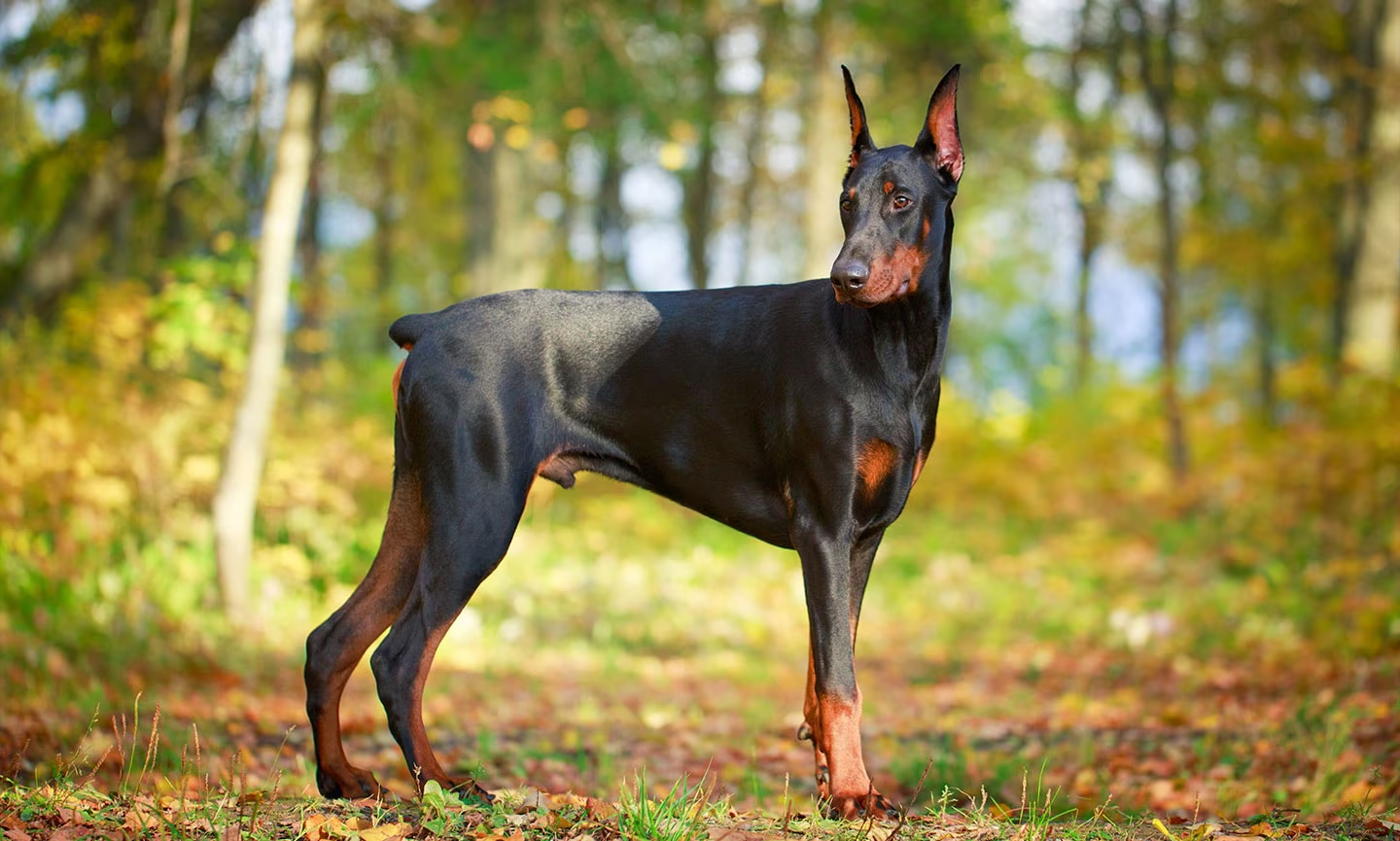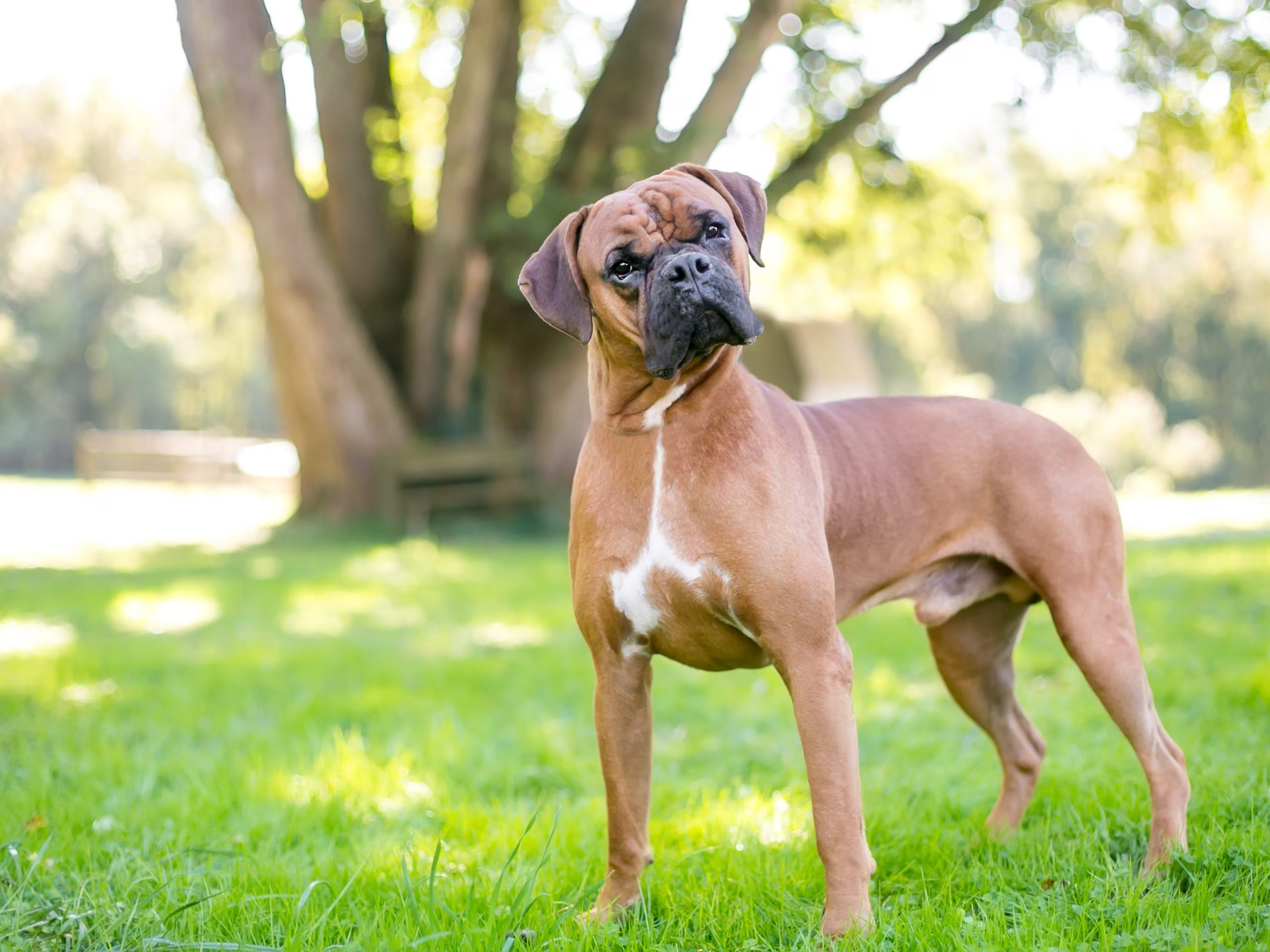Introduction: Meet the Mighty Rottweiler
OK, let’s just address the elephant in the room – Rottweilers have a bit of a reputation. With their powerful build, intense gaze, and deep bark, they can look pretty intimidating if you don’t know them. But as a proud Rottie parent, I’m here to spill the tea on these misunderstood gentle giants. Behind that muscular exterior lies one of the most loyal, intelligent, and affectionate companions you could ever welcome into your home. These dogs aren’t just strong in body—they’re massive in heart too.
Whether you’re thinking about adding a Rottweiler to your family or just curious about this fascinating breed, this guide will walk you through everything from their ancient Roman origins to modern-day care tips. Spoiler alert: they’re not the scary dogs that movies make them out to be (looking at you, “National Lampoon’s Christmas Vacation”!). When raised with love, proper training, and socialization, Rottweilers become devoted family members who will protect and cherish you with unwavering loyalty.
Get ready to fall in love with the breed that has captured hearts for literally thousands of years—yes, they’re that historic! Let’s dive into the world of Rottweilers together.
A Breed with Ancient Roots: The Fascinating History of Rottweilers
Would you believe me if I told you that when you look at a Rottweiler, you’re basically looking at a piece of living history dating back to the Roman Empire? It’s true! These magnificent dogs are considered one of the oldest surviving dog breeds in the world, with their ancestry tracing back over 2,000 years to ancient Rome. Talk about vintage vibes!
From Roman Legions to German Butchers
The ancestors of today’s Rottweilers were mastiff-type dogs that accompanied Roman legions as they marched across Europe. These powerful pups had the crucial job of herding cattle that traveled with the armies as a mobile food source and protecting them from thieves and predators. When the Romans invaded what is now Switzerland and Germany, they brought these working dogs along with them.
As the Roman Empire expanded northward, their route frequently passed through a town in southern Germany called Rottweil, which eventually became a major center for cattle commerce. When the empire eventually collapsed, these dogs remained in the region, where they continued their herding and guarding duties. Over time, local breeding developed the dogs we recognize today.
The breed earned the German name “Rottweiler Metzgerhund,” which literally means “Rottweil butcher’s dog.” Why? Because local butchers used these powerful pups to herd livestock and pull carts loaded with meat to market. Smart and strong, Rottweilers would even carry money pouches around their necks after sales were made, bringing the earnings safely back to their owners. Early credit card security system, anyone?
From Near Extinction to Worldwide Recognition
By the mid-19th century, when railways replaced cattle driving, Rottweilers nearly faced extinction as their traditional jobs disappeared. Thankfully, their versatility saved them. The build-up to World War I created high demand for police and military dogs, which sparked renewed interest in the breed. Rottweilers served in both World Wars as messenger, ambulance, draft, and guard dogs.
The first Rottweiler club in Germany was founded in 1914, and by 1931, the breed had gained official recognition from the American Kennel Club. Today, Rottweilers consistently rank among the most popular dog breeds in America, coming in at number eight on the AKC’s 2021 popularity list. Not bad for a breed that almost disappeared, right?
Unmistakable Looks: Physical Characteristics of Rottweilers
Let’s be real—Rottweilers turn heads whenever they strut down the street. With their powerful, muscular build and distinctive black-and-tan coloring, they’re impossible to miss. But there’s so much more to their appearance than just their intimidating first impression.
Size and Build
Rottweilers are medium-large to large dogs with a robust, powerful frame that showcases their working heritage. Males typically stand 24-27 inches tall at the shoulder and weigh between 95-135 pounds. Females are slightly smaller, standing 22-25 inches and weighing 80-100 pounds. Despite their size, well-bred Rotties move with surprising grace and agility.
Their body is compact and powerful rather than long and rangy, with strong bone structure and well-developed muscles. A Rottweiler’s chest is broad and deep, and their back remains level and firm, giving them that characteristic solid stance. When a Rottie enters the room, you definitely know it!
That Distinctive Coat
The Rottweiler’s coat is short, dense, and straight, with a glossy black base color accented by distinct rust to mahogany markings. These markings appear in specific places: on the cheeks, muzzle, chest, legs, over the eyes, and under the tail. The contrast between the rich black and warm tan creates that iconic Rottweiler look we all recognize.
While long-haired Rottweilers do exist (thanks to a recessive gene), they don’t meet the breed standard. And though you might see some Rotties with docked tails in the US, it’s worth noting that tail docking is now banned in many countries, and the natural tail is becoming more common worldwide.
Head and Expression
The Rottweiler’s head is perhaps their most distinctive feature—broad between the ears with a moderately arched forehead. Their muzzle is straight, not too long or short in proportion to the skull. But it’s their eyes that really capture your attention—medium-sized, almond-shaped, and a warm dark brown that can melt your heart when they look at you adoringly (which mine does when it’s dinner time, without fail).
Their expression is alert, confident, and steady. When a well-socialized Rottie looks at their family members, there’s a softness and warmth that completely contradicts their tough-guy reputation. With strangers, though, you might notice a more watchful, assessing gaze—they’re always on duty, even when relaxing.
Beyond the Stereotype: Understanding Rottweiler Temperament
If you’ve only seen Rottweilers portrayed in movies or media, you might have some misconceptions about their personality. Let me set the record straight—these dogs are so much more than the stereotypical guard dogs they’re often made out to be.
Loyal Protectors with a Soft Side
Rottweilers are fiercely devoted to their families. Their loyalty isn’t just a trait—it’s their defining characteristic. Once you’ve earned a Rottie’s trust, you’ve got a friend for life who would do anything to keep you safe. This protective instinct comes naturally to them, thanks to their herding and guarding heritage.
But here’s what many people don’t realize: inside the home, Rottweilers are often big goofballs. My Rottie thinks he’s a 100-pound lap dog and has no concept of personal space. Many Rottweiler owners describe their dogs as “clownish” with their families, often following them from room to room and trying to participate in whatever activity is happening. They love to play and have a surprisingly silly side that only their inner circle gets to see.
Intelligence and Trainability
Rottweilers are seriously smart cookies. They rank among the most intelligent dog breeds and can learn new commands in as few as five repetitions—sometimes even just one! This intelligence, combined with their eager-to-please attitude, makes them highly trainable when handled correctly.
What’s even more impressive is their adaptive intelligence. Unlike some dogs who need explicit training for everything, Rottweilers can problem-solve and learn by observing. They watch you, they watch other dogs, and they figure things out. My Rottie learned how to open the refrigerator just by watching me do it a few times (not exactly the skill I wanted him to pick up, but impressive nonetheless).
Approach to Strangers and Other Animals
Rottweilers typically take a “wait and see” approach to new people. They’re naturally aloof with strangers—not aggressive, but cautious and reserved. They’ll assess the situation before deciding if someone is friend or foe. This is why early and ongoing socialization is absolutely crucial for this breed.
With other animals, proper introduction and socialization are key. Rottweilers can get along beautifully with other pets when raised together from puppyhood. However, they may be less tolerant of new animals introduced later in life, especially same-sex dogs. Their strong prey drive means small animals like cats might need extra careful introductions.
The Truth About Aggression
Here’s the thing about Rottweiler aggression that often gets misunderstood: these dogs aren’t inherently aggressive, but they are naturally protective. Any aggression usually stems from poor breeding, lack of socialization, or inadequate training—not from the breed’s natural temperament.
A well-bred, well-socialized, and properly trained Rottweiler should be confident, calm, and discerning—able to tell the difference between a genuine threat and normal social interaction. They don’t need to be trained to protect; that instinct is already there. What they need is to be trained to be social, well-mannered, and under control in all situations.
Bringing Home a Rottweiler: Essential Care Guidelines
So you’ve fallen in love with the Rottweiler breed and are considering bringing one home? Amazing choice! But before you dive in, let’s talk about what these powerful pups need to thrive in your care.
Exercise Requirements: Working Dogs Need to Work
Rottweilers were bred to work, and even today’s companion Rotties have that same energy and drive in their DNA. They need regular, substantial exercise to stay physically and mentally healthy. Aim for at least 1-2 hours of physical activity daily, divided into multiple sessions.
Walking alone usually isn’t enough for a Rottweiler. These athletic dogs enjoy various activities like jogging (once they’re fully grown), hiking, swimming, and playing fetch. They also excel in dog sports like obedience, tracking, agility, and even carting competitions that tap into their heritage of pulling carts.
Remember that a bored Rottweiler is a potentially destructive Rottweiler. Without proper exercise, they may channel their energy into unwanted behaviors like chewing furniture, excessive barking, or digging up your garden. Trust me, I learned this lesson the hard way when my Rottie redecorated my couch after a rainy week with less exercise than usual.
Training: Consistency is Key
Training isn’t optional with a Rottweiler—it’s absolutely essential. These intelligent dogs need clear boundaries and consistent guidance from day one. Start training and socialization as early as 8 weeks old, and continue throughout their lives.
Despite what some outdated sources might suggest, Rottweilers do NOT need a harsh hand or dominance-based training. In fact, such approaches can backfire horribly with this sensitive breed. Positive reinforcement methods work wonderfully with Rotties, who are naturally eager to please and respond well to praise, treats, and play as rewards.
Focus on teaching basic obedience commands first, then progress to more advanced training. Because of their size and strength, “leave it” and solid recall commands are particularly important. Socialization with different people, animals, environments, and situations helps build a confident, well-adjusted dog who can handle various scenarios calmly.
Grooming: Less Work Than You Might Think
One of the perks of Rottweiler ownership is their relatively low-maintenance coat. Their short, dense fur requires just weekly brushing to remove loose hair and distribute natural oils. During seasonal shedding periods (usually spring and fall), you’ll want to brush more frequently to keep the fur tumbleweeds under control.
Bathing should be done only when necessary—usually every 6-8 weeks unless your dog gets particularly dirty. Over-bathing can strip the natural oils from their coat. Don’t forget other grooming basics: regular nail trims (every 3-4 weeks), ear cleaning, and dental care to keep your Rottie in top shape.
Health Considerations and Veterinary Care
Like all purebred dogs, Rottweilers have some breed-specific health concerns to watch for. The most common include hip and elbow dysplasia, heart conditions (particularly aortic stenosis), cancer (especially bone cancer), and eye problems.
Rottweilers are also prone to obesity, which can exacerbate joint problems. Maintaining a healthy weight through proper diet and exercise is crucial. Additionally, they’re at higher risk for bloat (gastric dilatation-volvulus), a life-threatening condition where the stomach fills with gas and twists. Many vets recommend preventative gastropexy surgery during spaying/neutering for this breed.
Regular veterinary check-ups are essential, ideally twice yearly as they age. The average lifespan of a Rottweiler is about 9-10 years, with females typically living slightly longer than males. With excellent care, some Rotties live into their early teens.
Diet and Nutrition
Feeding a high-quality diet appropriate for your Rottweiler’s age, size, and activity level is essential for their health. Puppies need puppy-specific food to support their rapid growth, while adults do well on quality adult formulations. Senior Rotties may benefit from senior-specific diets that support aging joints and metabolism.
Portion control is important for this breed, as they can easily become overweight. Follow feeding guidelines on your chosen food, but adjust based on your individual dog’s needs and activity level. Many Rottweiler owners prefer feeding two measured meals daily rather than free-feeding to help prevent bloat and monitor intake.
Some Rottweilers have food allergies or sensitivities that might require special diets. Work with your veterinarian if you notice symptoms like recurring ear infections, excessive itching, or digestive issues that might indicate food-related problems.
Is a Rottweiler Right for You? Honest Considerations
I absolutely adore my Rottweiler, but I’m also the first to admit that this breed isn’t for everyone. Before you commit to bringing one of these powerful pups into your life, here’s some real talk about what to consider.
Lifestyle Compatibility
Rottweilers thrive in active households where they receive plenty of attention, exercise, and mental stimulation. They’re not well-suited for homes where they’ll be left alone for long periods regularly, as they can develop separation anxiety and destructive behaviors.
If you work long hours or travel frequently without your dog, a Rottweiler might not be the best match. These social creatures want to be with their people and can become unhappy and problematic when isolated too much. They need a family that will integrate them into daily activities and make them feel like part of the pack.
Experience Level
While I hate to discourage anyone from experiencing the joy of Rottweiler ownership, honesty compels me to say that they generally aren’t recommended for first-time dog owners. Their size, strength, intelligence, and protective instincts create a combination that requires confident, knowledgeable handling.
Rottweilers need an owner who understands canine body language, can provide consistent training, and won’t be intimidated by their size or strength. Mishandling a Rottie’s training during critical developmental periods can lead to behavioral issues that are difficult to correct later.
Living Situation
Rottweilers can adapt to various living situations, but they do best with space to move. A house with a securely fenced yard is ideal, though they can adjust to apartment living if given sufficient exercise outside the home.
One important consideration: breed-specific legislation and rental restrictions. Unfortunately, some cities, insurance companies, and landlords have restrictions against Rottweilers (along with other breeds incorrectly labeled as “aggressive”). Before bringing a Rottie home, check local laws and housing policies to avoid heartbreaking situations later.
Financial Commitment
Let’s be real—large dogs come with large expenses. From food and preventative care to potential health issues, Rottweilers represent a significant financial commitment. Quality food for a large, active dog isn’t cheap, and veterinary care for breed-specific health issues can be costly.
For example, hip dysplasia surgery can run $2,000-$7,000 depending on severity, and treating cancer can cost even more. Pet insurance is highly recommended for Rottweiler owners to help manage unexpected healthcare costs. Additionally, training classes, appropriate containment (sturdy crates, fencing), and size-appropriate toys and equipment all add to the expense.
Finding Your Rottweiler: Adoption and Responsible Breeding
If you’ve decided a Rottweiler is the right breed for you (yay!), the next step is finding your perfect match. Whether you choose adoption or purchase from a breeder, making informed choices at this stage is crucial for both your happiness and the welfare of the breed.
Rescue and Adoption
Despite their loyalty and wonderful qualities, many Rottweilers end up in rescue situations due to owners who weren’t prepared for their needs. Adopting a Rottie in need can be an incredibly rewarding experience! Look for breed-specific rescue organizations or check your local shelters.
Adopting an adult Rottweiler has several advantages: their personality is already formed, they’re often already house-trained, and rescue organizations usually provide thorough behavioral assessments. Many rescued Rotties are wonderful dogs who simply needed more training, exercise, or attention than their previous owners could provide.
If you’re interested in adoption, the American Rottweiler Club and regional Rottweiler clubs can direct you to reputable rescue organizations. Be prepared for a thorough application process—good rescues are protective of their dogs and want to ensure they go to knowledgeable, committed homes.
Finding a Responsible Breeder
If you decide to purchase a Rottweiler puppy, finding a responsible, ethical breeder is absolutely essential. Good breeders focus on health, temperament, and adherence to breed standards—not profit.
A reputable Rottweiler breeder will:
- Perform health testing on breeding stock (including hip and elbow evaluations, cardiac screening, and eye exams)
- Prioritize temperament in breeding decisions
- Allow you to meet the puppy’s parents (or at least the mother)
- Raise puppies in a clean, stimulating home environment
- Begin early socialization and handling
- Provide health guarantees and ongoing support
- Ask you as many questions as you ask them
Red flags include breeders who have multiple litters available at all times, don’t allow facility visits, can’t provide health clearances, or seem primarily motivated by money. Responsible breeders often have waiting lists because they don’t breed extensively.
Puppy vs. Adult
Consider whether a puppy or adult Rottweiler better suits your situation. Puppies are adorable but require enormous time investments in training, socialization, and house-training. They’re also somewhat of an unknown quantity in terms of adult temperament and size.
Adult Rottweilers, whether from breeders who are rehoming retired show dogs or from rescue organizations, can be excellent choices. With adults, “what you see is what you get” in terms of size, energy level, and basic temperament. They may also have some training foundation already in place.
For first-time Rottweiler owners especially, an adult dog with a known history and established temperament can sometimes be a wiser choice than navigating the challenges of puppyhood with such a powerful breed.
Living with a Rottweiler: What to Expect
Once your Rottweiler comes home, what’s day-to-day life actually like? Let me share some insights from my own experience and those of other Rottie owners about the reality of living with these magnificent dogs.
The Velcro Dog Effect
Hope you like company, because your Rottweiler will rarely let you out of their sight! These devoted dogs want to be wherever their people are. My Rottie follows me from room to room, lies at my feet while I work, and would join me in the shower if I let him (thankfully, he draws the line at respecting bathroom privacy… mostly).
This closeness isn’t necessarily neediness—it’s how Rottweilers express their guardianship and affection. They want to be near you both to protect you and to enjoy your company. Many Rottie owners joke that they’ve forgotten what it’s like to use the bathroom alone or cook without a furry supervisor checking their work.
Social Dynamics
Rottweilers are incredibly perceptive about human emotions and social dynamics. They often position themselves strategically to observe interactions, especially when visitors come over. Many seem to appoint themselves as the “vibe checker” of the household, responding to tensions or excitement with heightened awareness.
When properly socialized, Rottweilers typically greet known visitors warmly but may remain reserved with new people until they’ve been accepted by their owners. This natural guardianship doesn’t need to be encouraged—what needs cultivation is their discernment and appropriate responses.
With children, well-raised Rottweilers can be surprisingly gentle and patient. They seem to understand their own strength and often modify their behavior around smaller humans. Still, all interactions between dogs and children should be supervised, especially with a breed as powerful as the Rottweiler.
The Public Reaction
Be prepared for a wide range of public reactions to your Rottweiler. Some people will cross the street to avoid you, while others will want to approach and ask questions. You’ll likely hear everything from “Is that dog safe?” to “I had a Rottie growing up and she was the best dog ever!”
Unfortunately, breed stereotypes persist, and you may occasionally face discrimination or fear. This is why having an impeccably trained, well-socialized Rottweiler is so important—your dog becomes an ambassador for the breed every time you go out in public.
The flip side is the instant bond you’ll feel with other Rottweiler owners. There’s nothing like the knowing nod exchanged between two Rottie parents passing on the street—that silent acknowledgment that you both understand the special joy and responsibility of loving this misunderstood breed.
The Rewards
Living with a Rottweiler means never feeling truly alone. Their presence is substantial in every sense—physical, emotional, and spiritual. They offer protection without being asked, companionship without condition, and loyalty that never wavers.
The bond formed with a Rottweiler is unlike any other. Perhaps it’s because they require so much from their owners in terms of training, socialization, and understanding, but the relationship becomes deeply reciprocal. You become their person, and they become your dog in the most profound sense.
And there’s something indescribably special about earning the complete trust and devotion of an animal with the strength and capability of a Rottweiler. When a dog who could easily overpower you chooses instead to look to you for guidance and permission, it creates a partnership based on mutual respect that’s truly extraordinary.
Conclusion: The Truth About Rottweilers
After diving deep into the world of Rottweilers, it’s clear that this breed contains multitudes. They are simultaneously powerful and gentle, protective and affectionate, imposing and silly. The stereotypes that follow them capture only a sliver of their true nature and miss the depth of character that makes Rottweilers so beloved by those who know them well.
These dogs aren’t for everyone—they require commitment, consistency, and courage from their owners. But for those willing to put in the work, Rottweilers reward the effort tenfold with their unwavering loyalty, intelligence, and heart.
The intimidating appearance that catches the eye reveals nothing about the clownish companion who will try to sit in your lap despite weighing a hundred pounds. The protective instinct that earns cautionary tales says nothing about the gentle giant who will carefully take treats from a child’s hand. The powerful physique that can inspire fear doesn’t hint at the sensitive soul who can read your emotions better than most humans.
In a world quick to judge on appearances, Rottweilers remind us to look deeper, to understand before we assume, and to recognize that strength and gentleness often walk hand in paw. If you’re fortunate enough to welcome one into your life, prepare to have your heart stolen by a dog who will protect it fiercely in return.
Whether you’re considering a Rottweiler as your next family member or simply appreciating them from afar, I hope this guide has given you a more complete picture of this remarkable breed. They deserve to be understood in their full complexity—not as caricatures, but as the loyal, loving, occasionally stubborn, unfailingly devoted companions they truly are.




